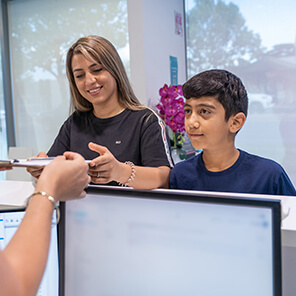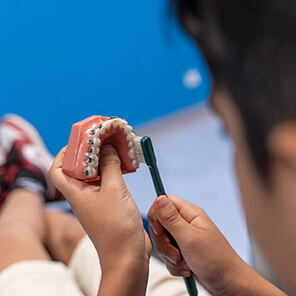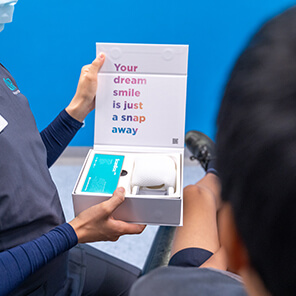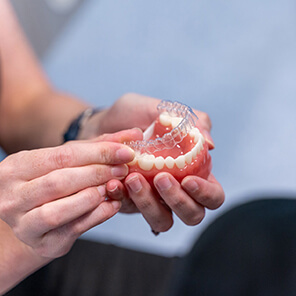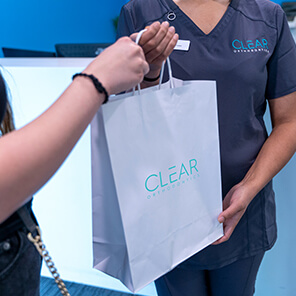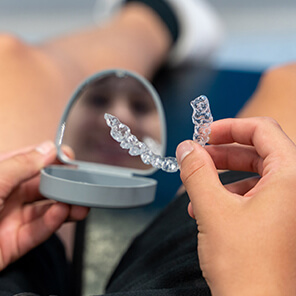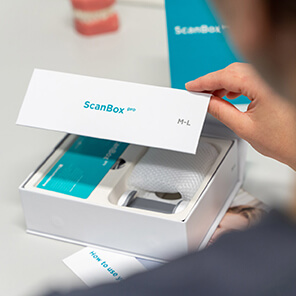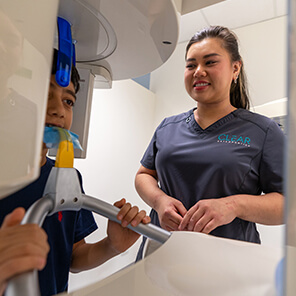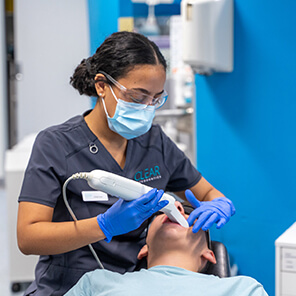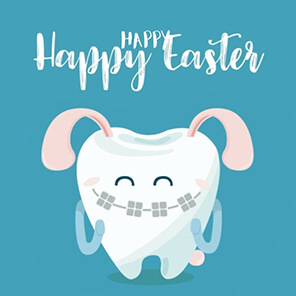Sep 19, 2025
What’s The Best Age To Get Braces For A Child?

If you are wondering when to book your child's first orthodontic visit, you are not alone. The timing can feel confusing, especially when baby teeth are still present. The good news is that there is a clear, evidence-based starting point that helps you make confident decisions and set your child up for a healthy, happy smile.
The best age to get braces, and why age 7 matters
The Australian Society of Orthodontists recommends a first check by around age 7. At this stage, most children have a mix of baby and adult teeth, which gives a Specialist Orthodontist a clear view of how the bite is developing. An early assessment does not always lead to treatment straight away. Many children simply need monitoring until the ideal time in late childhood or early teens.
So, what is the best age to get braces for a child? There is no single number that fits everyone. Many kids start comprehensive treatment between 11 and 14, once most adult teeth have erupted. However, some problems benefit from early intervention between ages 7 and 10. Short, targeted treatment in this younger window can guide jaw growth, create space for adult teeth, and reduce the need for extractions or lengthy treatment later.
Think of an early check as future proofing. If everything looks fine, you gain peace of mind. If something needs attention, early action can make the teenage phase simpler and shorter.
How early intervention works
Early intervention focuses on growth guidance rather than full alignment of every tooth. Common approaches include:
- Orthodontic expanders that gently widen the upper jaw to improve bite balance and create room for incoming teeth.
- Habit-breaking devices for thumb sucking or lip biting that affect tooth position and jaw growth.
- Partial braces or aligners to correct specific tooth positions that interfere with normal eruption.
For suitable cases, Invisalign® First can help guide developing arches and make space for adult teeth. Aligners are removable for eating and brushing, which many families find convenient. Your Specialist Orthodontist will advise on whether aligners or an appliance, such as an expander, is the right choice for your child.
Signs your child could benefit from an early orthodontic assessment
Book a check if you notice any of the following:
- Crowding or overlapping front teeth
- Early or late loss of baby teeth
- Crossbite, underbite, or an off-centre bite
- Mouth breathing, persistent snoring, or speech concerns
- Thumb or finger sucking beyond age 5 to 6
- Protruding front teeth
- Teeth that meet abnormally, or do not meet at all
- Difficulty chewing or biting
These signs do not automatically mean treatment is needed now. They do signal that a Specialist Orthodontist should take a closer look.
What happens at the first visit
Your child's first visit is comfortable and informative. Here is what to expect:
- Conversation and history: We discuss your concerns, medical and dental history, and your child's habits.
- Digital records: We use an intra-oral scanner to capture precise 3D images, without messy impressions. Photos and low-dose X-rays may be taken if needed.
- Assessment: We evaluate jaw growth, tooth eruption, and bite harmony.
- Personalised plan: You will receive clear recommendations, which may be one of the following:
- No treatment now, review in 6 to 12 months
- Early intervention to guide growth or tooth eruption
- A plan to begin comprehensive treatment when more adult teeth are in place
You will also get practical advice about oral hygiene, diet, sports mouthguards, and any habit-breaking strategies if relevant.
How early care can simplify the teen years
Early treatment can make a big difference later. Benefits may include:
- Creating space for adult teeth, reducing the chance of extractions
- Improving jaw balance and facial harmony
- Correcting functional issues that affect chewing, speech, or airway
- Reducing the length and complexity of teenage braces or aligners
- Building your child's confidence with a smile that is developing on track
In short, early care is about doing the right thing at the right time, not doing more than needed.
Answering common parent questions in Australia
- What is the best age to get braces for a child? The first assessment is around age 7. Many children start full treatment between 11 and 14, though some benefit from targeted early care between 7 and 10.
- Can kids get braces for free in Australia? Public funding for orthodontics is limited and usually reserved for complex dental or craniofacial conditions through hospital programs. Most families fund treatment privately, sometimes with Extras cover from health insurance. At Clear Orthodontics, we offer interest-free payment plans and seasonal promotions to help with budgeting.
- Do you need a referral to see an orthodontist in Australia? No referral is required. You can book directly with a Specialist Orthodontist.
Treatment options when the time is right
When your child is ready for comprehensive treatment, you can choose from options designed for comfort and efficiency, including LightForce™ 3D printed braces that are custom made for each tooth. If your child prefers a removable and discreet option, clear aligners such as Invisalign® can be a great fit for responsible wearers.
If you would like to see how aligners compare with braces in more detail, explore clear aligners in Melbourne for a quick overview of options. If your child has a narrow upper jaw or crossbite, your orthodontist may discuss palatal expanders to create space and support a balanced bite.
What to expect with costs and timing
Every child's plan is unique. Your orthodontist will outline:
- Total treatment goals and stages
- Estimated timeframes
- All included costs, from appliances to retainers
- Payment options, including interest-free plans
Private health insurance with orthodontic extras may provide a rebate. Our team can provide item numbers so you can check benefits with your fund.
A simple path to a confident smile
Choosing when to start braces does not have to be stressful. Book an early assessment by age 7 so you can understand your child's growth pattern, plan ahead, and act only when needed. If treatment is recommended, you will have clear options that fit your child's personality and your family's routine.
Our friendly team cares for families across Melbourne, with clinics in Caroline Springs and Broadmeadows.
Final takeaways
- Start with an orthodontic check around age 7.
- Early intervention can guide growth and make later treatment faster and simpler.
- No referral is needed, and most treatment is privately funded, often supported by payment plans.
- Options include Invisalign® First for young patients, as well as appliances like expanders and custom LightForce™ braces during later stages.
We are here to make the journey clear and comfortable. If you are ready to get answers and a plan tailored to your child, book a consultation with our Specialist Orthodontist team today.

